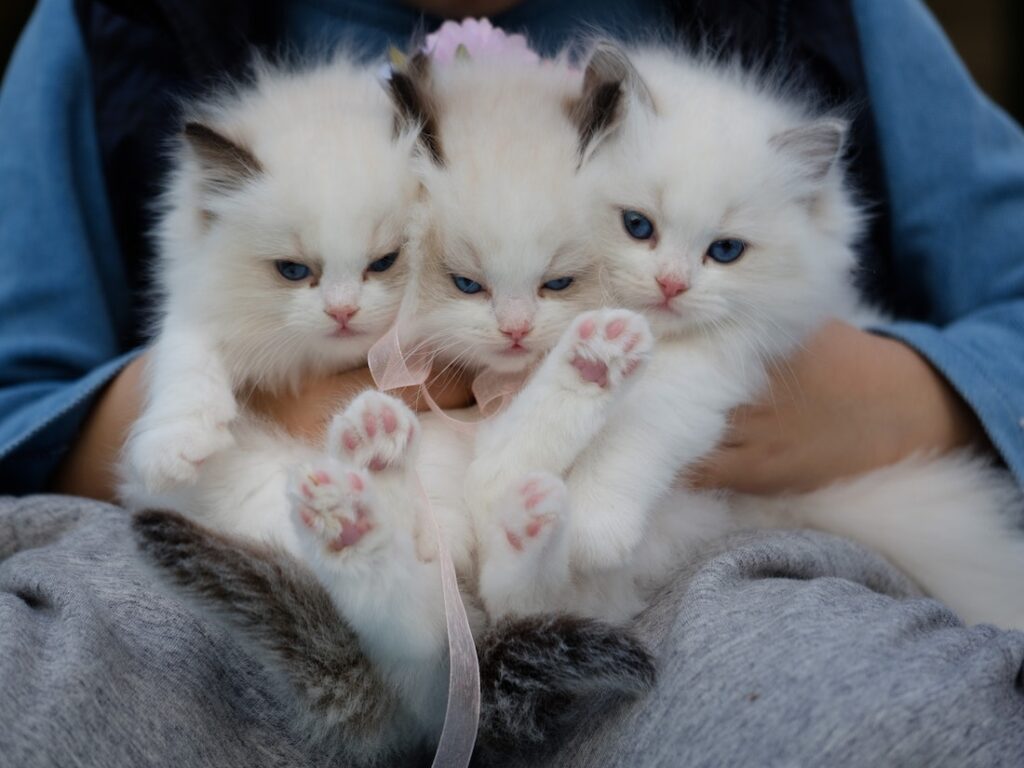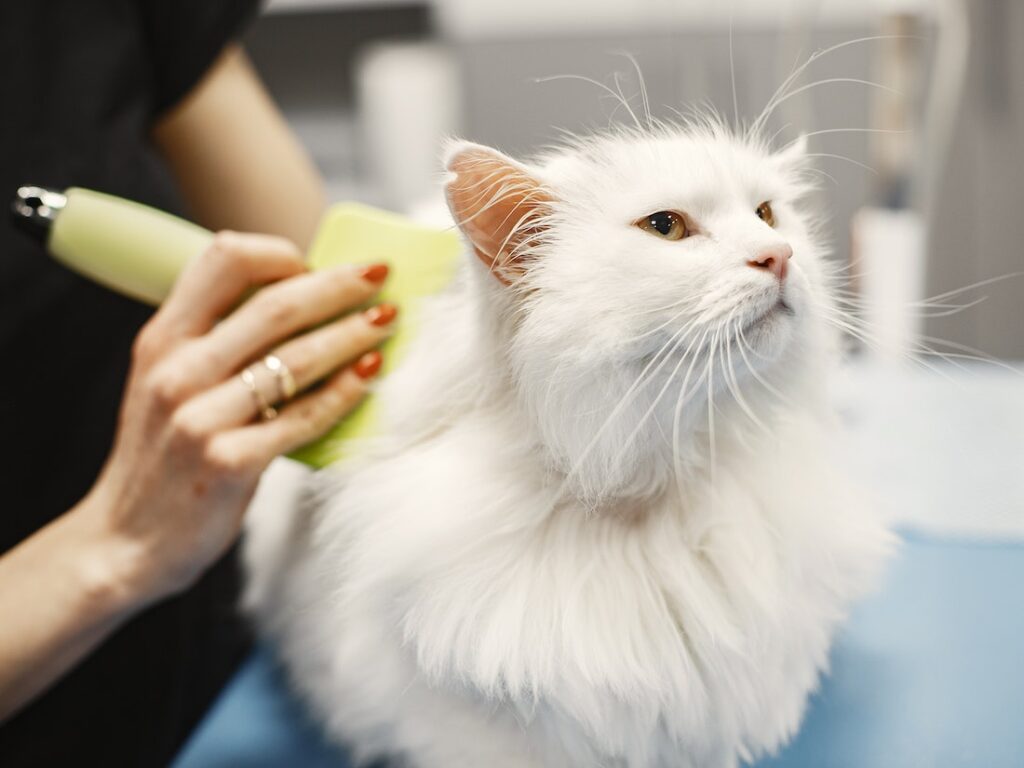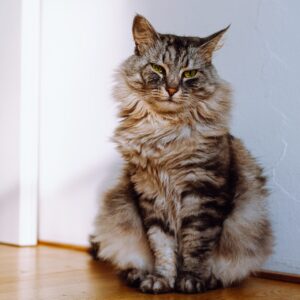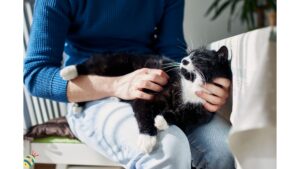The beauty and social nature of the Turkish angora cat make the animal a potential pet. On the other hand, managing cats, especially those that shed heavily, isn’t an easy task.
Therefore, before you decide on keeping a pet, it’s wise to dig deeper about her. And hence the question; “do Turkish Angora cats shed?“.
Let’s find out in the post!
What You Should Know About the Turkish Angora Cat
The Turkish angora cat (Felis Catus) is also called Ankara. Mostly the cat has a long silky white coat that makes her adorable. However, the pet can also assume other colors such as the tortoiseshell, red, bi, and tricolors.
By structure, the Turkish angora is medium in size and displays a slender body. One of their distinguishing features is that they have no undercoats. Besides, the Turkish angora cat is social and highly intelligent.
Therefore, Do the Turkish Angora Cats Shed?
Except for the hairless sphynx cat, other breeds do shed. The Turkish angora breed has a long coat and sheds a medium amount of fur.
When you compare it to other cat breeds with long coats, Turkish Angora registers manageable shedding habits. However, you can further minimize the amount of shedding by feeding her a healthy diet and proper grooming.
So before adopting a Turkish angora cat, be prepared that the cat requires some degree of care and grooming. But her grooming demand isn’t as extensive as other double coat long-haired species.
For example, the cat species requires brushing once or twice a week. In addition, bathing the Turkish angora after a couple of months is what you need.

How Frequently Does the Angora Cat Shed?
Technically, the Turkish Angora experiences some degree of shedding all year round. However, the shedding becomes more noticeable at certain times of the year. That is especially true as the season changes.
Cats require a thicker coat to brave the chiller winter. During the fall, the Turkish angora sheds the thin summer coat and puts on a thicker and warmer winter coat.
Once the winter passes, the thicker coat becomes unnecessary in the summer. So once more, in the spring, the cat sheds and the thick fur give way to a thin coat that suits the summer months.
How Can You Minimize the Turkish Angora Shedding?
As outlined before, the cat species undergoes a minimal degree of shedding on a daily basis. However, as the season changes, the shedding becomes more pronounced. You can thus carry out the following to minimize hair loss;
Healthy Diet
Like all other body parts, a cat’s coat needs a healthy diet to thrive. So, feeding the Turkish angora cat on a healthy cat diet is vital. A balanced diet gives strong root hair and hence prevents unnecessary shedding.
Regular Brushing
Besides proper diet, regular brushing helps in managing cat shedding. But since the Turkish Angora has a single coat, she doesn’t require intensive grooming.
Brushing her coat once a week using a slicker brush is all that you need. Such a routine helps in managing mats and removing loose hair. If necessary, increase the brushing frequency during the summer to prevent hairballs.
Bathing
Bathing also helps in removing loose hair and managing shedding. That way, you minimize the amount of cat dander and hair that the pet scatters on your compound.
Nevertheless, extreme bathing frequency harms than benefits the Turkish angora cat. You only need to bathe your cat once every few months.
Otherwise, overbathing can lead to baldness and irritations on the skin of the cat. Besides, while bathing the pet, stick to cat-friendly shampoo.

Other Causes of Unusual Shedding in Turkish Angora Cats.
As noted, shedding in Turkish Angora becomes more visible as the season changes in fall and spring. The following can also cause abnormal shedding habits in the cat species:
Allergies
Allergies form one of the prime causes of excessive hair loss in cats. Some of the give way signs of allergy in a cat include
- Excessive biting and scratching of the skin
- Redness of the skin exposed to the allergens
- Bald patches on the skin
In most cases, the allergens stem from food, the environment, and harsh chemicals. A visit to the vet can help narrow down the cause of the allergen and how to avoid it.
Poor Diet
When you feed the cat a non-balanced diet, you deprive the cat of a chance to grow strong and healthy. When the cat doesn’t get a healthy diet rich in minerals, protein, and vitamins, the pet may suffer excessive shedding.
Inadequate Grooming
Regular grooming helps eliminate loose fur and mats. As a result, you’ll notice less cat dander and hair spread all over the house.
On the other hand, excessive grooming and brushing promote hair loss. Hence do not brush the cat more than twice a week.
Underlying Health Condition
An unresolved health condition can also result in unexpected hair loss. That may include ringworms, contact dermatitis, and parasite infestation. Such infections cause swelling and itching on the skin. Eventually, it gives way to hair loss.
High-Stress Level
Stress can also cause unhealthy hair loss in cats. Most causes of stress to a cat are a change of residence, the introduction of another pet, or continuous loud noise.
Besides identifying the stress factor, showing affection to your Turkish angora cat helps manage shedding.
Do Turkish Angora Cats Shed?
The Turkish angora sheds but to a minimal degree. Shedding reaches its peak as the season changes (spring and fall). Otherwise, during other times, the fur loss is easy to maintain.
If the shedding habit of a Turkish Angora cat bothers you, there is another way to manage it. That includes putting her on a healthy diet, regular brushing, and taking baths.




